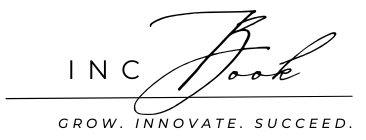Small Business Growth and Trends in 2025: A Resilient and Innovative Future
- Digital Transformation: Small businesses are embracing digital tools like e-commerce, AI, and cloud computing to streamline operations and reach customers.
- Sustainability Focus: Many small businesses are adopting eco-friendly practices to meet growing consumer demand for sustainable products and services.
- Employee Well-being: Mental health and employee satisfaction are becoming key priorities, with small businesses offering more flexible work arrangements and support systems.
- Hybrid Work Models: Remote and hybrid work models are increasingly common as small businesses embrace flexible work schedules and global talent pools.
- Personalized Customer Experience: Small businesses are using data to create personalized marketing and tailored offerings to meet individual customer needs.
- Access to Capital: Financial technologies like crowdfunding and peer-to-peer lending are providing more access to capital for small business growth.
As we move into 2025, small businesses continue to demonstrate their resilience and adaptability, playing a crucial role in driving economic recovery and innovation. In the United States alone, approximately 33.3 million small businesses now account for 99.9% of all businesses, underlining their significant presence in the economy. Despite challenges such as inflation and labor shortages, small businesses are projected to see continued growth, with nearly 45% of small business owners planning to expand in the upcoming year. This surge in confidence signals that small businesses are not only recovering from the economic disruptions caused by the COVID-19 pandemic but are also poised to lead the way toward an innovative, more sustainable future.
Small Business Trends in 2025
Several key trends are emerging that will shape the landscape of small businesses in 2025:
1. Technology Adoption and Digital Transformation
Small businesses are increasingly embracing digital tools and technologies to streamline operations, improve customer engagement, and expand their reach. From e-commerce platforms to cloud computing and AI-powered customer service, businesses of all sizes are realizing the importance of technology to stay competitive. Over 50% of small business owners are investing in digital marketing, with a focus on social media, search engine optimization (SEO), and e-commerce to enhance their online presence.
2. Sustainability and Eco-Conscious Practices
With growing awareness of climate change and environmental degradation, many small businesses are turning toward sustainable practices. From adopting eco-friendly packaging and reducing carbon footprints to sourcing products locally, businesses are prioritizing sustainability. Consumers are increasingly demanding products that are both eco-friendly and ethically sourced, prompting small business owners to consider the environmental impact of their operations. This trend is particularly strong in industries like food, fashion, and retail.
3. Mental Health and Employee Well-being
Employee well-being has moved to the forefront of small business strategies. As mental health awareness increases, small businesses are recognizing the importance of creating a positive work environment to retain talent and maintain productivity. According to recent studies, mental health support programs are a growing trend among small businesses. Offering flexible work arrangements, providing mental health resources, and promoting a healthy work-life balance are key to maintaining employee satisfaction and productivity. This trend is especially important in sectors such as healthcare, education, and customer service.
4. Hybrid and Remote Work Models
The pandemic dramatically changed how people work, and small businesses are adapting to hybrid and remote work models. Even as physical offices reopen, many businesses are embracing flexible work schedules and allowing employees to work remotely. This trend is not only about offering employees greater flexibility but also about expanding the talent pool. With the ability to hire remote workers, small businesses can tap into global talent and hire the best candidates regardless of location.
5. Personalization and Customer-Centric Approaches
Consumers today are looking for more than just products or services; they seek personalized experiences. Small businesses are increasingly focusing on tailoring their offerings to meet individual customer needs. Whether through personalized marketing, customized products, or loyalty programs, businesses are using data and customer feedback to create a more individualized customer journey. This trend is seen across industries, especially in sectors such as e-commerce, health and wellness, and hospitality.
6. Financial Technology and Access to Capital
Access to capital remains a significant challenge for many small businesses. However, fintech innovations are making it easier for entrepreneurs to secure funding. Crowdfunding platforms, peer-to-peer lending, and alternative financing options are helping bridge the gap for small business owners who may not have access to traditional bank loans. As more small businesses embrace these fintech solutions, the financial landscape is becoming more inclusive and accessible, giving entrepreneurs the resources they need to grow and thrive.
The Future of Small Business: A Focus on Innovation and Community Engagement
Despite the challenges that small businesses face, the outlook for 2025 is promising. Small businesses are innovative, adaptive, and entrepreneurial, qualities that are enabling them to weather economic uncertainties and make the most of new opportunities. Going forward, small businesses will continue to lead in creating new products and services, pushing technological boundaries, and fostering stronger community ties.
In particular, localism and community engagement will be central to small business success. Consumers are increasingly prioritizing local businesses over large corporations, valuing the personalized service, unique offerings, and commitment to the community that small businesses provide. This trend is evident in the “shop local” movement, which has gained traction in the wake of the pandemic. Small businesses that can build strong relationships with their customers and maintain a local presence will continue to thrive in 2025 and beyond.
